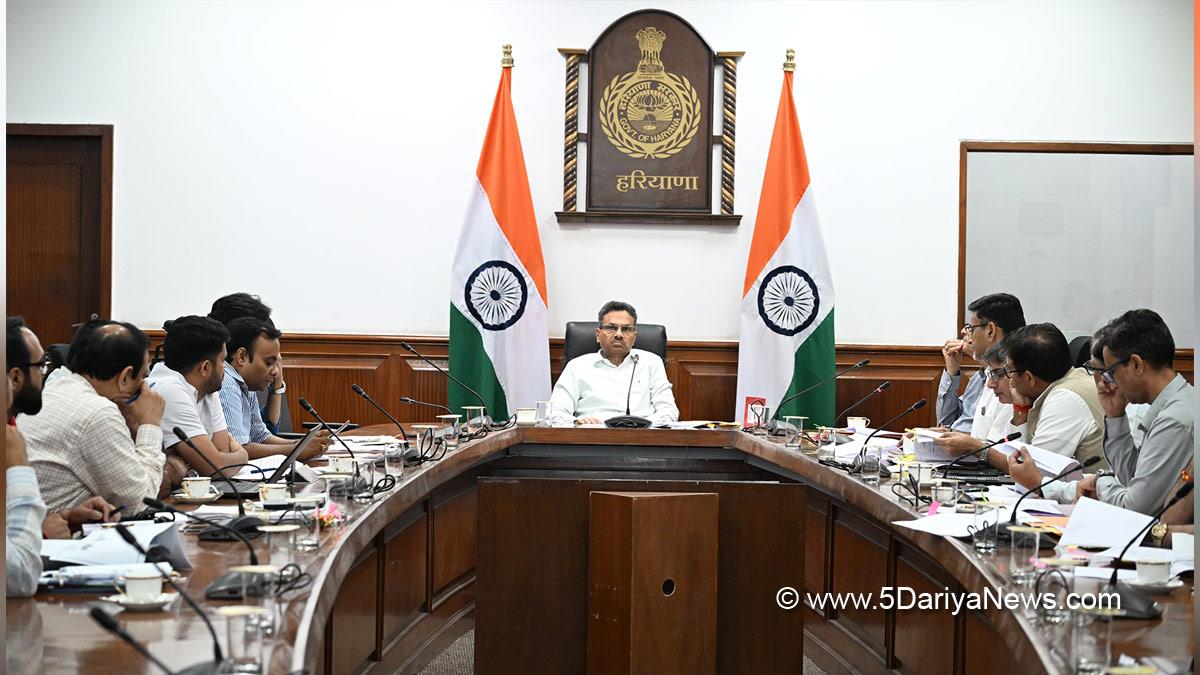Haryana Accelerates Green Transition in NCR with Bold Measures for Cleaner Mobility and Better Air Quality

The Haryana Government has unveiled an ambitious roadmap to phase out polluting vehicles and manage construction dust to significantly improve air quality across the National Capital Region (NCR). At a high-level review meeting chaired by Chief Secretary Sh. Anurag Rastogi here today, detailed strategies and timelines were laid out, reflecting the state’s strong commitment to environmental stewardship.
As part of this action plan, from November 1, 2025, fuel stations in Gurugram, Faridabad, and Sonipat will no longer supply fuel to End-of-Life (EoL) vehicles. This restriction will extend to the remaining NCR districts from April 1, 2026.
To enforce this, Automatic Number Plate Recognition (ANPR) cameras will be installed at all fuel stations—by October 31, 2025 in the first phase districts, and by March 31, 2026 in rest of the NCR. These systems, along with traffic surveillance cameras and Command and Control Centres, will be instrumental in identifying EoL vehicles for challaning, impounding, and scrapping.
In a major shift towards green mobility, the state has mandated that only CNG or electric 3-wheeler autorickshaws will be inducted into existing fleets going forward. Effective November 1, 2025, only BS-VI compliant Light, Medium, and Heavy Goods Vehicles—excluding essential services and Delhi-registered vehicles—will be allowed entry into Delhi.
Further, all non-conforming goods vehicles, including those carrying essential commodities, will be barred from entering the city after October 31, 2026.It was informed that 382 BS-VI buses shall be added by end of October this year for better connectivity between Haryana and Delhi.
From January 1, 2026, no new diesel or petrol 2-wheelers, 4-wheeler LCVs, or N1-category LGVs will be allowed into the fleet. Also, all buses entering Delhi, including tourist buses and special permit vehicles, must operate in EV/CNG/BS-VI mode from November 1, 2026.
Haryana is also intensifying its efforts to manage construction and demolition (C\&D) waste and reduce road dust emissions—two major contributors to urban pollution. Facilities to process 300 metric tonnes per day of C\&D waste are operational in both Gurugram and Faridabad. One more C&D facility is to be established in Gurugram to cater to existing excess C&D waste.
Additionally, the Draft Action Plan on Road Dust Mitigation has been submitted to the Commission for Air Quality Management (CAQM). Importantly, all road-owning agencies have been directed to develop at least one model stretch in Gurugram and Faridabad for 2025-26 which will be replicated in other districts following CAQM’s Standard Framework as a priority.
It was decided in the meeting that Haryana State Pollution Control Board (HSPCB) will set up 10 CAAQMS in Faridabad, Gurugram, Rewari and Jhajjar and tender process has been initiated by the HSPCB in this regard.The Chief Secretary said mandatory co-firing of paddy straw based bio-mass pellets/briquettes in brick kilns is already implemented in NCR districts and the department must create awareness through films and other media so that this can be replicated in non-NCR Districts of Haryana as well.
He also called for achieving the target of 50 percent mandatory co-firing of paddy straw based bio-mass pellets/briquettes in brick kilns for implementation by 2026 instead of the prescribed timeline of 2028.Additional Chief Secretary, Environment, Forests & Wildlife Department, Sh. Anand Mohan Sharan, Chairman, Haryana State Pollution Control Board, Sh. Vineet Garg, Commissioner & Secretary, Urban Local Bodies Department, Sh. Vikas Gupta and senior officers of various departments were present in the meeting.

Comments are closed.